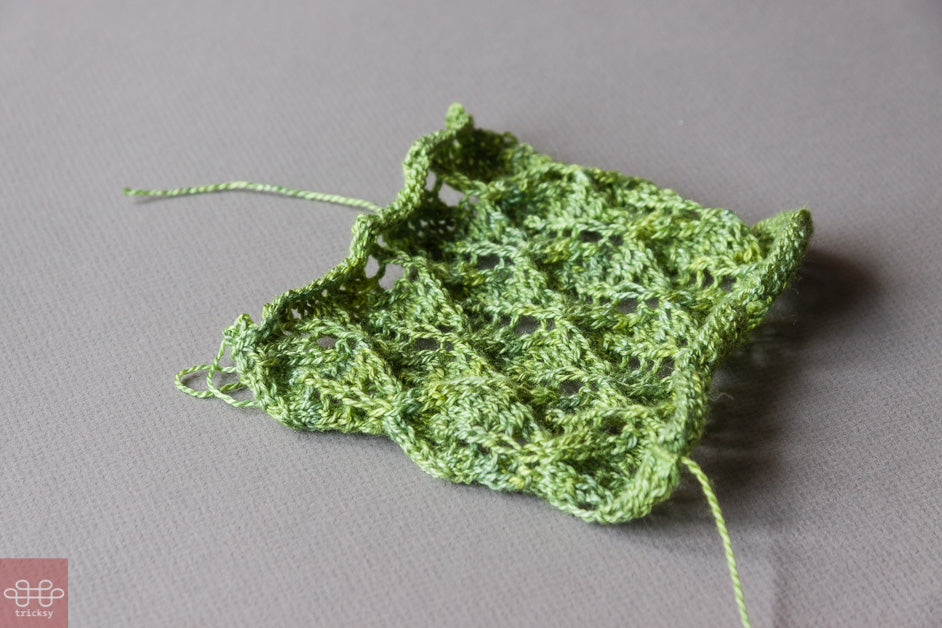So, block or don't block, it's a personal choice. It's not like, paying your taxes or, I don't know, stopping at red lights.
But here are some reasons to block. And when I say block, I almost always mean wet block.
- water will reveal the true nature of (most) yarns. Fibres open up and soften after a little soak.
- blocking will, moderately, correct uneven stitch size (but don't rely on it to correct big problems)
- blocking will quiet the curl at the edge of your pieces, making it much easier to sew them together
- lace work requires a soak and a vigorous block. Unblocked lace can look like a wrinkled up rag. More on this below.
- colour knitting also requires a soak. More on this below.
- soaking removes any excess dye or residual chemicals from the dyeing process.
- soaking removes any residual sizing. Sizing is the process of adding some a stabilizer, like a starch or gelatin, to fibre (or textiles or paper). Sizing holds fibre in place and prevents breakage while it's going through machines.
I have read that some fibres should not be wet blocked. Well, unless you're going to dry clean your work (and I don't love that idea), it's going to get wet eventually.
I read that cashmere shouldn't be wet blocked. Well. I just don't know about that. Yes, some fibres become more fragile when wet. Okay, so be more careful with them when they're wet. Because, with cashmere, until you soak it and block it, you won't see its magic. (I think that's because cashmere has sizing in it from the spinning process.) When I'm knitting with a cashmere blend that has a high ratio of cashmere (say 30% or more), I often think, huh, this doesn't seem so great. And it was pretty expensive. But then, after I soak and block it, I remember, oohhh that's right. This is why I would trade my first-born for cashmere. It's just that soft.
Some people say don't get cotton or rayon wet. But again, how are you going to wash it? I wet block both cotton and rayon. Gently.
So anyways, back to my example, which is Lace Blocking.
Remember this from last week?

Well, after wet blocking it, it now looks like this:

And, for different reasons, color work also benefits from wet blocking. Uneven stitch sizes are corrected (a little). And the fibre blooms, making the colour pattern look filled in. No gaps or stringy bits. And it flattens out the knitting quite a bit.
Here's a swatch of colour before:

And here it is after:

Here are a couple of close ups of blocked colour knitting. See how the colours look almost painted? With a nice heathery wool like this (Rowan Fine Tweed), wet blocking brings out the best in your work.

 "
"
